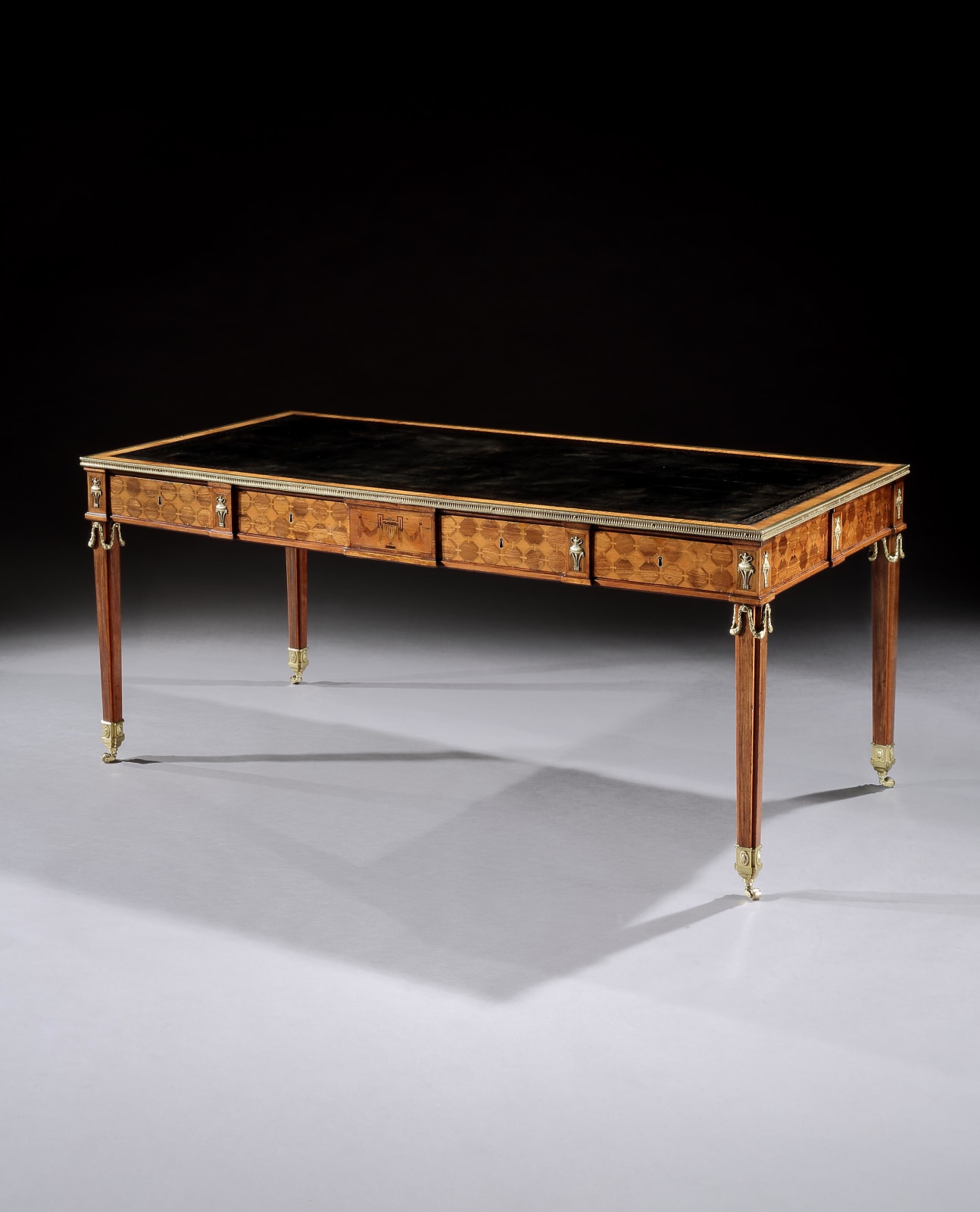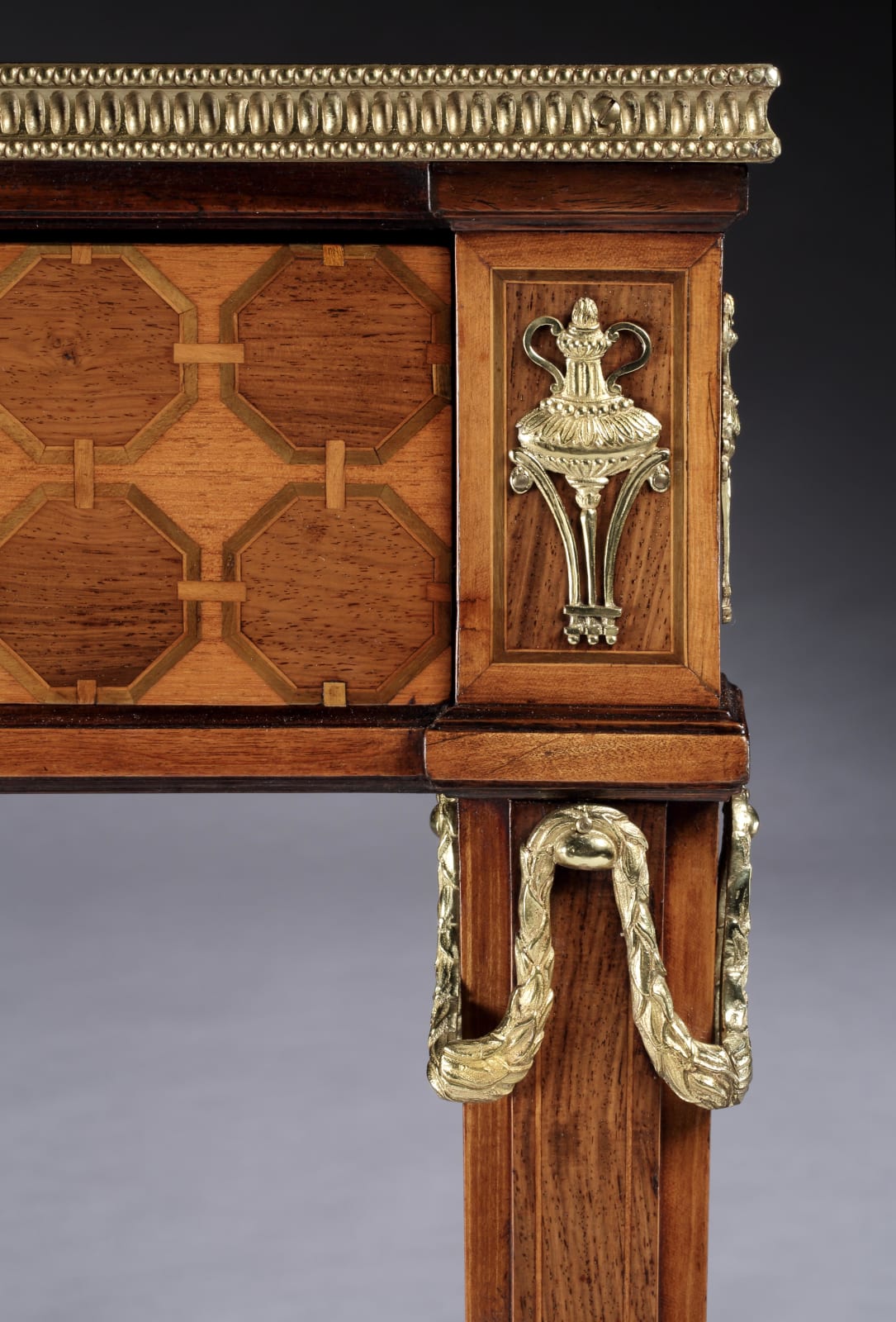A GEORGE III SATINWOOD WRITING TABLE, English, circa 1785
Knee height: 2 ft; 61 cm
Width: 5 ft 7 ¾ in; 172 cm
Depth: 2 ft 8 in; 81 cm
A George III ormolu mounted satinwood, tulipwood and cocobolo writing table attributed to Chrostopher Fuhrlohg.
The parquetry veneered frieze houses four drawers to one side and dummy drawers to the reverse side.
One drawer has a faux ivory label reading ‘Frank Partridge/Works of Art/26 King Street St. James’s/and/New York’.
Christopher Fuhrlohg was born in 1737 into a Swiss family that had emigrated to Sweden. He came to London via Amsterdam and Paris (where he had worked for Simon Oeben in 1767), and initially worked for Linnell. The influence of the latest French fashion on his work can be found in the collection of Linnell drawings at the Victoria and Albert Museum, London, where a design for a commode is signed with his name. Strong neoclassical lines and skilful parquetry veneering are characteristic of Fuhrlohg’s work.
Note: The table retains all the original ormolu mounts and probably the original gold tooled black leather writing surface. The castor wheels and forks are of later date.
Provenance
Frank Partridge Ltd., London, England, and New York, USA;
Partridge Fine Arts Ltd., London, England;
Private collection, Switzerland.
Literature
Illustrated:
Partridge Fine Arts Ltd., ‘Recent Acquisitions 1996’, catalogue, pp. 58-9.
The desk in situ in Mrs Pleydell-Bouverie's bedroom at Julians, Hertfordshire. Country Life, 27th June 1947, p.1213.




